I’m floating at sea but dancing on air. Lounging in the private enclave of my sunny balcony, the only sound is the rhythm of waves curling out to the horizon. Is it my imagination, I wonder, that the watery splashes are echoing the pulse of the Bossa Nova or, maybe, the Samba?
By now – the last sea day of a 19-day cruise on Silversea’s new Silver Muse – my senses spontaneously swing to the Latin beats that percolated throughout South America from Buenos Aires, Argentina to Rio de Janeiro Brazil and beyond. After being immersed in the sights, sounds and local cultures, no wonder my toes are swaying to the flow of waves.
As a luxury cruise to a part of the world where pockets of life vary widely from splendid sophistication to gritty third-world poverty, the stunning Silver Muse – with its impeccable service, style and superb cuisine – proved that the ship is the destination as much as the country. As a conduit to authentic experiences that give genuine perceptions of South American highlights to its inquisitive, discerning passengers who value their time as a precious commodity not to be wasted, Silver Muse proved that a cruise is an enlightening way to gain a true sense of the land.
The ship – with its seamless itinerary to a stream of places that are tricky or tedious to reach independently – made me feel confidently secure as a solo passenger. Though I relied on the ship’s guided excursions to off-the-beaten track locations, my adventurous spirit occasionally spurred me to venture out alone, or with new shipboard friends, always with my wits alert.
Interestingly – as passengers on this itinerary ranged from early 40s to 97 (yes!) – I met people who explored every port on their own, some with private drivers, some walking and hopping on local transport. A 70’s man sought out every extreme feat, like hang-gliding off a cliff in Argentina. One couple – both young teachers from Sweden – had brought collapsible mountain bikes. In every port – even when we tendered ashore – they disembarked with their bikes, backpacks brimming with provisions, and shot off like lightning for inland treks. Meeting other passengers was a breeze on the small Silver Muse, with a capacity of 596 guests.
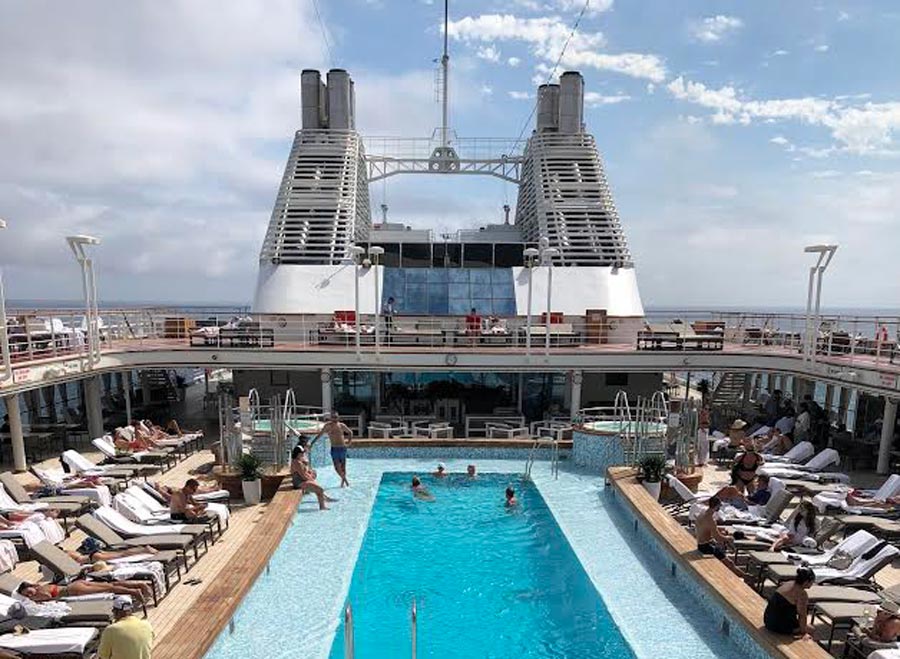
After boarding in Buenos Aires and being welcomed by my butler who proffered an array of luxe amenities, I headed to La Terrazza for an al fresco lunch. While standing at the maître d’s desk, I met a group of British passengers. Turned out they were among dozens of international passengers on a 66-day cruise looping from Fort Lauderdale that circumnavigated South America. These gregarious Brits were heading on to their winter homes in Barbados, an island en route. So far, they “loved” Silver Muse. They filled me in on the ship’s loveliest place to relax with a drink – the Arts Café deck – and suggested I attend the port lectures, all given by acclaimed experts.
Later, at cocktails before dinner, I met a couple of ladies, also veteran solo cruisers. Planning ahead, one – a retired diplomat – invited me to join her on a Rio de Janeiro tour. A loyal Silversea fan, she was on to complete her “bucket list of all the Wonders of the World” with a visit to Christ the Redeemer. The other – a fashion marketer – invited me for the ship’s guided day trip, up a mountain rainforest to one of Brazil’s highest peaks to the Imperial City of Petropolis, founded in 1843, to see the Imperial Palace, historic home of Brazil’s last Emperor, Dom Pedro II and his wife (who, incidentally was the first in the Americas to free slaves), and to imbibe the local flavours of a famed Churrasco barbecue restaurant.
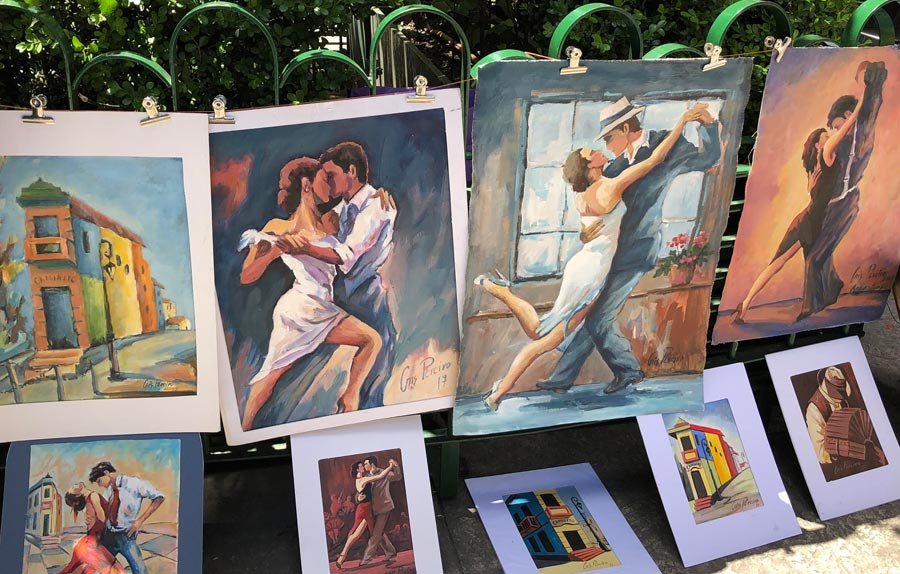
The first two days at sea set a lively tone for the cruise, with plenty of chances to meet like-minded passengers for sharing and comparing experiences along the way. A presentation on Latin American music showcased the nuances between Argentina’s tango and Brazil’s samba, rhumba, Bossa Nova and traced the influences of African heritage on the percussive beats. That inspired me to join the dance classes – something I’d never done before. By disembarkation, I could step into everything from salsa to cha cha to meringue to swing, albeit not perfectly, or gracefully.
Turns out, much of Brazil’s culture in music, the arts and food are traced to the diverse cultures stemming from the slave trade that, according to one guide, ultimately created 132 different skin colours in the country. Articulate speakers gave insight to South America’s history and current political scenarios. Some passengers took Spanish or French lessons, or set into spa-fitness-wellness routines. Two game “rituals” were already running, started by passengers who’d embarked earlier: serious ping pong and golf putting contests. Golf with a gang of funny Aussies, New Zealanders, Irish and Americans became my daily ritual laugh bash, too. The easy camaraderie aboard Silver Muse began feeling like an embracing country club.
Mingling with other passengers, I learned that Silver Muse’s itinerary along South America’s “Costa Verde” eastern coast opened everyone’s eyes to the beauty of the landscapes, but more to the diversity of intrinsic cultures and music that surged a unique spirit to every port, every local street scene.
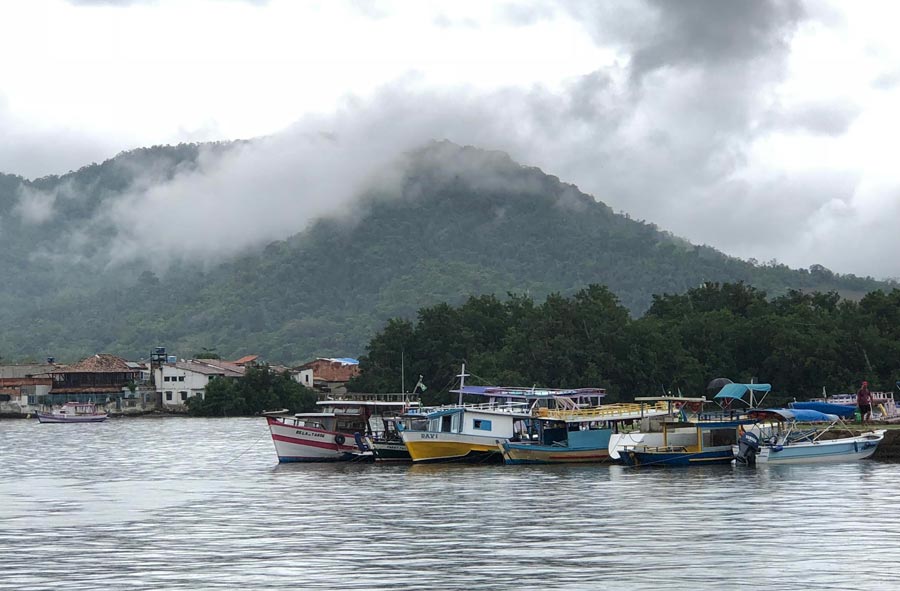
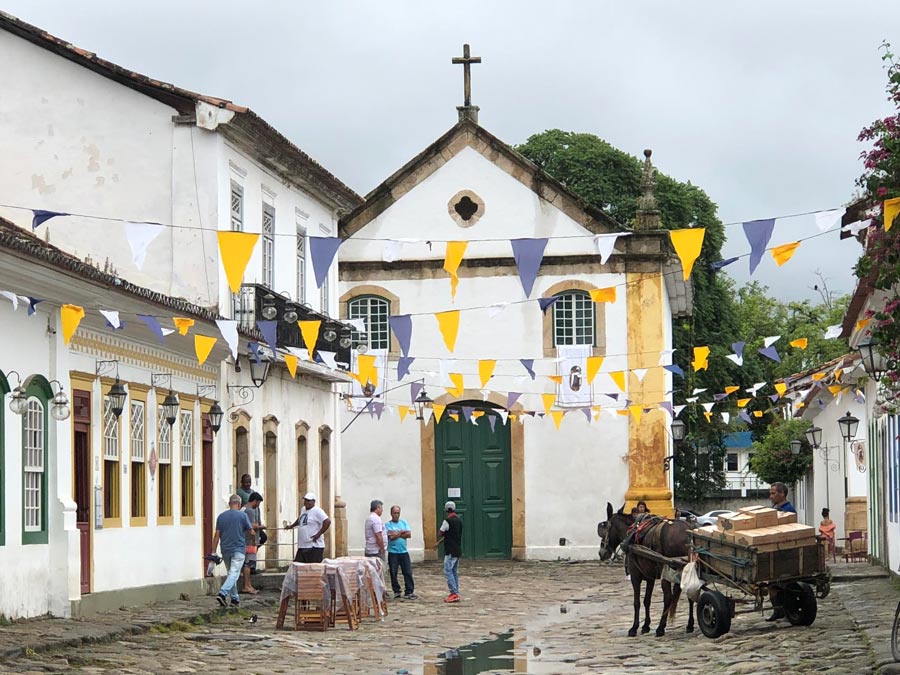
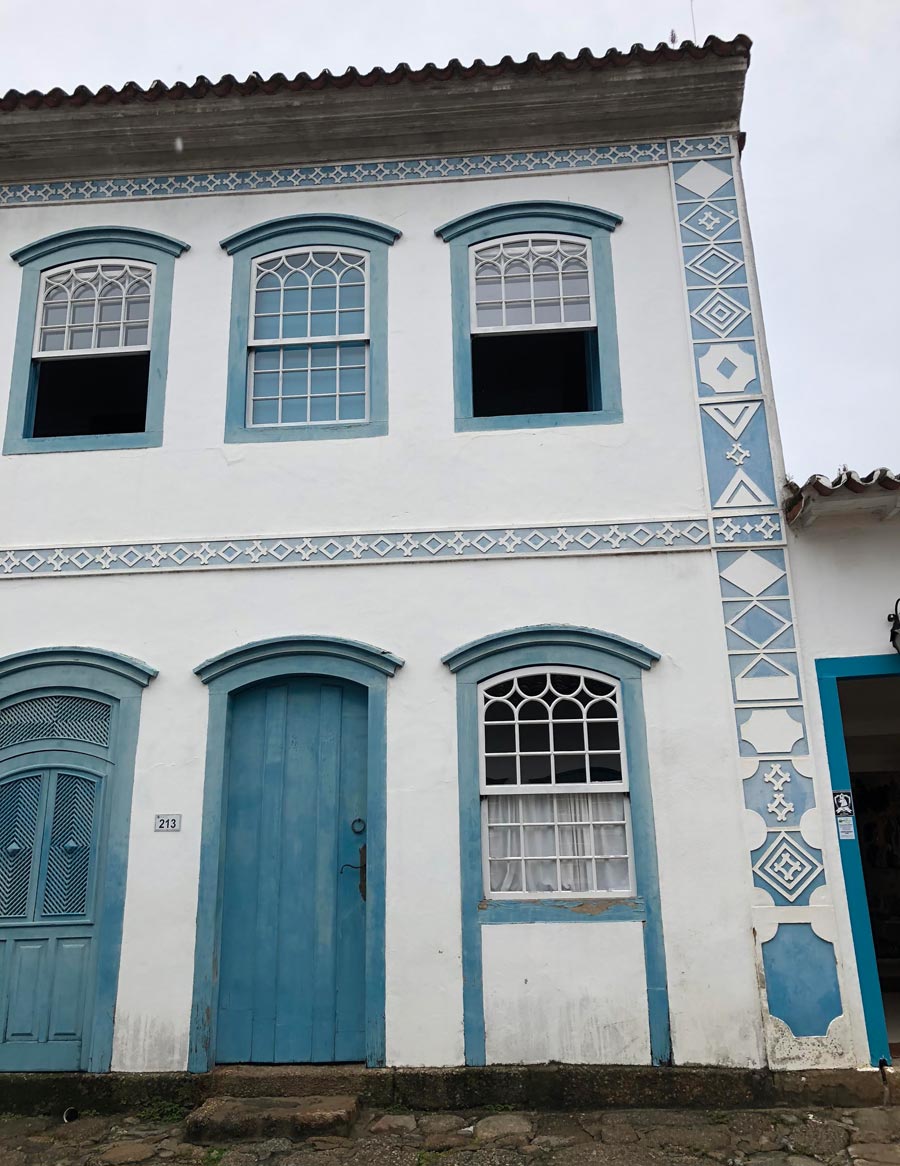
Expecting to feel Latin-Spanish-Portugese influences, everyone felt wowed by the rich Afro-Brazilian heritage seen everywhere. Not surprisingly, so many ports oozed multicultural juxtapositions of places beautiful and ugly, rich and poor.
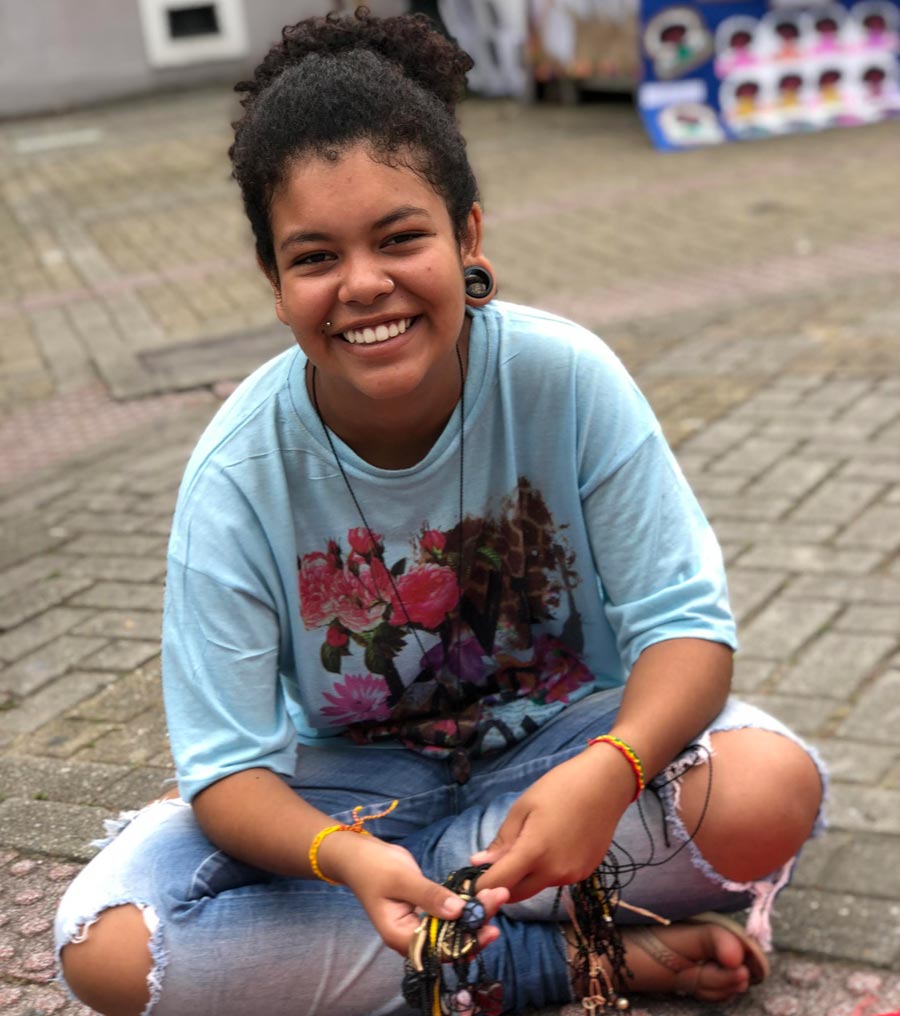
Strolling through Itajai, a local craft market celebrating the role of Afro-Brazilian women first awakened me to their blossoming hope for identity. Exploring in drenching rain the colonial architecture in the UNESCO World Heritage Site of Paraty, founded by Portuguese in 1750, became a lesson in the slave trade. Some passengers participated in a cooking class with a famed Brazilian Master Chef, others ventured up-river to see the mountain villages built by German settlers working the Minas Gerais gold mines, took 4×4 jaunts through the dunes and into the forest, or sampled the locally-made, 38% Cachaca “firewater.”
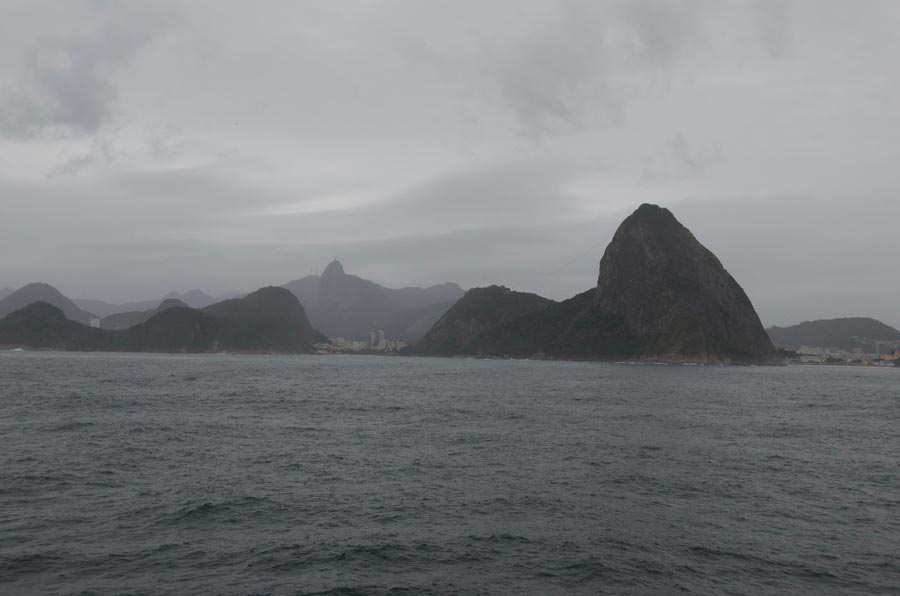
Dark skies couldn’t dampen the thrill of approaching Rio de Janeiro for a three-day stay. Shades of dim light created magical silhouettes of Sugar Loaf Mountain and Corcovado with Christ the Redeemer atop. This view of Rio is designated as a UNESCO World Heritage Cultural Landscape.
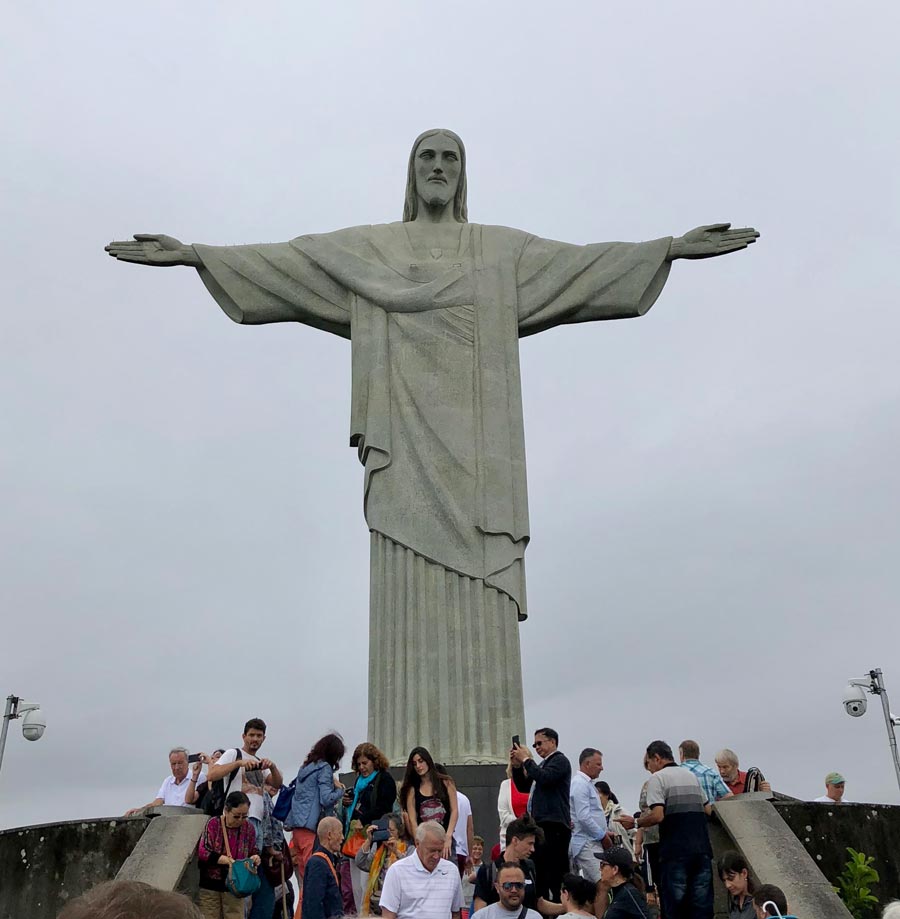
Apparently, with all the tourist board’s glowing images, foggy dawns are more the norm than brilliant sunshine.
By mid-morning, however, blue skies illuminated the “Cidade Maravilhosa” – marvelous city – and all its beaches teeming with local Cariocas, the Botanical Gardens, the Sambadrome of Carnival, the famed Maracana football stadium, and the swank areas dotted with jewelry shops, not to mention the more that 750 poor favelas (housing hubs) passengers were cautioned to avoid. Thanks to Silver Muse for bringing expert entertainers on board, the passengers saw spectacular performances by Samba Carnival dancers.
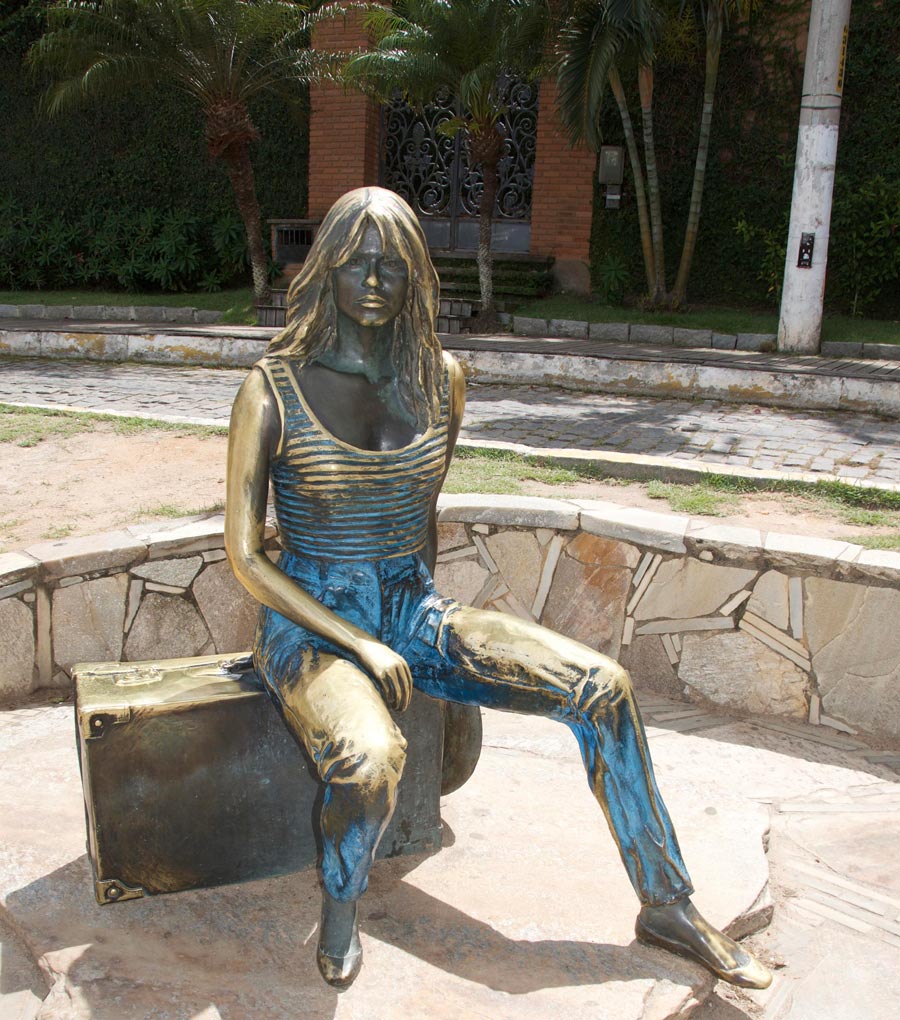
Buzios – made famous by French actress Brigitte Bardot and her string bikini – was pure delight, a cheery spot to sip a potent Caipirinha cocktail at a sunny café. San Salvador de Bahia showcased the fusion culture thriving among the buskers and vendors in its historic, upper Pelourinho district, a UNESCO World Heritage Site that boasts over 300 churches.
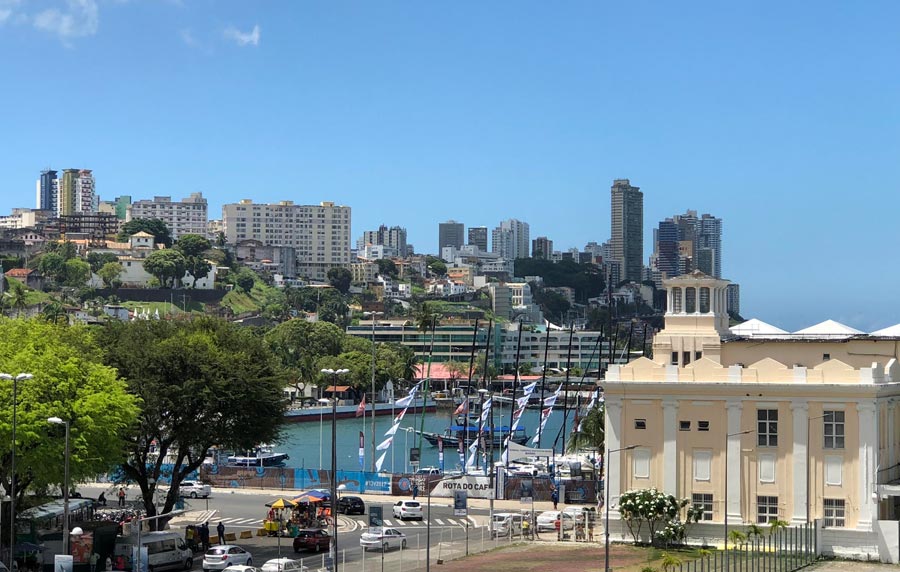
To call the excursion to Fortaleza a rude awakening is an understatement that belies the contrast between rich and poor, safe and brutal neighbourhoods. For all the views of the Gothic, Romanesque and Art Nouveau architecture of the city built by Dutch in 1649 and later conquered by Portuguese, its white beaches, wealthy pockets, the cathedral with its astonishing stained-glass windows, and charm of markets brimming with leathers and lace, passengers were struck silent by the number of buildings rimmed with walls capped by barbed wire, and the armed guards posted everywhere. We felt blessed to return to Silver Muse and head to sea.
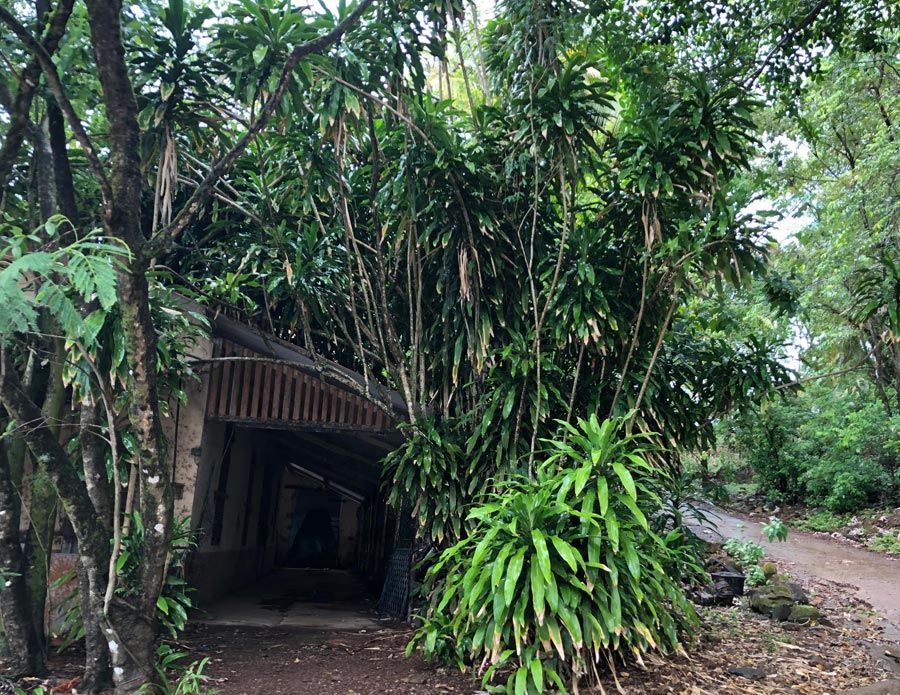
En route to remote Devil’s Island – actually, an archipelago of three islands off the coast of French Guiana – passengers learned of Napoleon’s notorious penal colony that held French Army Captain Dreyfus, who had been wrongly convicted, and saw the movie Papillion that portrayed Henri Charriere’s escape. Though I never trekked through the jungle to the Guiana Space Centre, which is rumoured to be a potential launching spot for a US space telescope, I was smitten by a handsome French Legion Army soldier and his rescue dog.
Now, lounging at sea, reminiscing on my South American sojourn, my mind feels loath to bid arrivederci to the Italian-owned Silver Muse while my toes sway to the swish of the waves. Blame it on the Bossa Nova, the song of love.
